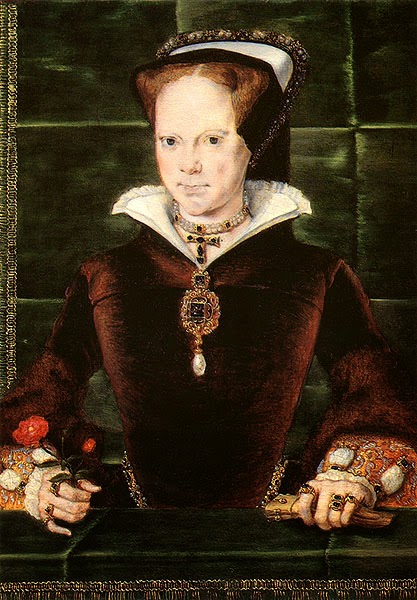Mary had always rejected and resented the break with Rome that her father had instituted and his subsequent establishment of the Anglican Church that had flowed from her half-brother's protestantism, and now she tried to turn England back to Roman Catholicism. This effort was carried out by force, and hundreds of Protestant leaders were executed. The first was John Rogers (a.k.a. “Thomas Matthews”), the printer of the “Matthews-Tyndale Bible”. His execution was followed by the execution of former Archbishop of Canterbury, Thomas Cranmer, who was primarily responsible for the printing of the “Great Bible”. Hundreds more would follow in Mary’s bloody reign of terror. This earned the queen the title of “Bloody Mary”.
Her restoration of Catholicism was remarkable in some ways: Where only one bishop, John Fisher of Rochester, had resisted King Henry VIII’s rejection of Roman catholicism to the point that Henry had him executed; most of Mary's bishops were more loyal and refused to conform to the restored Protestantism under Elizabeth I, and they died under house arrest.










